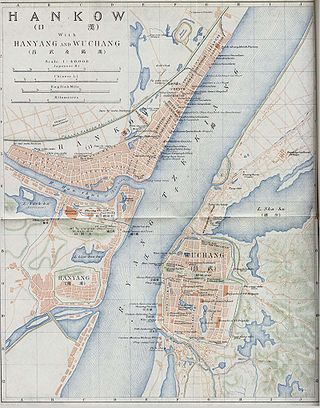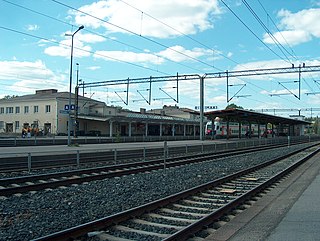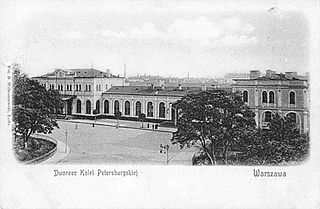| |||||
| Decades: | |||||
|---|---|---|---|---|---|
| See also: | |||||
Events from the year 1862 in Russia .
| |||||
| Decades: | |||||
|---|---|---|---|---|---|
| See also: | |||||
Events from the year 1862 in Russia .
| | This section needs expansion. You can help by adding to it. (July 2016) |
| | This section needs expansion. You can help by adding to it. (July 2016) |

A transcontinental railroad or transcontinental railway is contiguous railroad trackage, that crosses a continental land mass and has terminals at different oceans or continental borders. Such networks can be via the tracks of either a single railroad or over those owned or controlled by multiple railway companies along a continuous route. Although Europe is crisscrossed by railways, the railroads within Europe are usually not considered transcontinental, with the possible exception of the historic Orient Express. Transcontinental railroads helped open up interior regions of continents not previously colonized to exploration and settlement that would not otherwise have been feasible. In many cases they also formed the backbones of cross-country passenger and freight transportation networks. Many of them continue to have an important role in freight transportation and some like the Trans-Siberian Railway even have passenger trains going from one end to the other.

Hankou, alternately romanized as Hankow, was one of the three towns merged to become modern-day Wuhan city, the capital of the Hubei province, China. It stands north of the Han and Yangtze Rivers where the Han flows into the Yangtze. Hankou is connected by bridges to its triplet sister towns Hanyang and Wuchang.

The Great Western Railway Metropolitan Class2-4-0T broad gauge steam locomotives with condensing apparatus were used for working trains on the Metropolitan Railway. The equipment was later removed, though the class continued to work suburban trains on GWR lines in London. The class was introduced into service between June 1862 and October 1864, and withdrawn between June 1871 and December 1877.

Komsomolskaya Square, known as Kalanchyovskaya before 1932, is a square in Moscow, with a blend of revivalist Tsarist and Stalinist architecture. It is informally referred to as Three Station Square after the three rail termini situated there: Leningradsky, Yaroslavsky, and Kazansky. These stations connect Moscow with Saint Petersburg, northwestern Russia, the Volga region, and Siberia via the Trans-Siberian Railway.

Railways with a railway track gauge of 5 ft first appeared in the United Kingdom and the United States. This gauge became commonly known as "Russian gauge", because the government of the Russian Empire chose it in 1843. Former areas and states of the Empire have inherited this standard. However in 1970, Soviet Railways re-defined the gauge as 1,520 mm.

Tikkurila station is located in Tikkurila, the administrative centre of Vantaa in the Helsinki metropolitan area. It is located approximately 16 kilometres (9.9 mi) from Helsinki Central railway station and 5 kilometres (3.1 mi) from Helsinki Airport. The station is considered the main railway station of Vantaa, and almost all long-distance and commuter trains stop here.

Varshavsky station, or Warsaw station, is a former passenger railway station in Saint Petersburg, Russia. It is located to the south of the city centre, and was in operation from 1853 to 2001 From 2001 to 2017 it served as the home of the Russian Railway Museum.

Buryn is a city in Konotop Raion of Sumy Oblast, Ukraine. It was the administrative center of Buryn Raion until it was abolished on 18 July 2020. The population estimate is 8,197. Between 24 February and 4 April 2022, the city was under Russian occupation.

Kazansky railway terminal also known as Moscow Kazansky railway station is one of nine railway terminals in Moscow, situated on the Komsomolskaya Square, across the square from the Leningradsky and Yaroslavsky stations. It was ranked nr. 9 in a list of Europe's best train stations by the Consumer Choice Centre in 2020.

Moscow Yaroslavsky railway station is one of the nine main railway stations in Moscow. Situated on Komsomolskaya Square, Moscow Yaroslavskaya has the highest passenger throughput of all nine of the capital's main-line terminuses. It serves eastern destinations, including those in the Russian Far East, being the western terminus of the world's longest railway line, the Trans-Siberian. The station takes its name from that of the ancient city of Yaroslavl which, lying 284 rail kilometres north-east of Moscow, is the first large city served by the line.

Riihimäki railway station is a railway station located in the town of Riihimäki, Finland.

The Erivan Governorate was a province (guberniya) of the Caucasus Viceroyalty of the Russian Empire, with its centеr in Erivan. Its area was 27,830 sq. kilometеrs, roughly corresponding to what is now most of central Armenia, the Iğdır Province of Turkey, and the Nakhchivan exclave of Azerbaijan. At the end of the 19th century, it bordered the Tiflis Governorate to the north, the Elizavetpol Governorate to the east, the Kars Oblast to the west, and Persia and the Ottoman Empire to the south. Mount Ararat and the fertile Ararat Valley were included in the center of the province.

The railway transport in Warsaw, Warsaw Railway Junction is a set of seven major railway lines centred on the city of Warsaw. It serves the capital of Poland, as well as cities belonging to its agglomeration of over 2.5 million inhabitants. At its peak the lines of the Warsaw Railway Junction served approximately 250,000 passengers daily.

General Nicholas Nikolaievich Annenkov was an influential Russian General of the Infantry, Governor-General of Kiev and Bessarabia, and member of the State Privy Council. He was the brother of prominent Russian poet, Varvara Annenkova.

Rail transport in Belarus is owned by the national rail company BŽD / BČ. The railway network consists of 5,512 km, its gauge is 1,520 mm and 874 km are electrified.

Saint Petersburg–Warsaw Railway is a 1,333 km (828 mi) long railway, built in the 19th century by the Russian Empire to connect Russia with Central Europe. At the time the entire railway was within the Russian Empire: Warsaw was under a Russian partition of Poland. Due to territorial changes, the line now lies within five countries and crosses the eastern border of the European Union three times. Therefore, no passenger trains follow the entire route. Passenger trains between Saint Petersburg and Warsaw used to travel through Brest instead and a new line called Rail Baltica is under development to improve the direct connection between Poland and Lithuania.
Kew railway station was opened by the North and South Western Junction Railway in 1853 in Brentford in west London on the western curve of the Kew triangle. It closed in 1862 after the railway had in 1862 opened its Kew Bridge platforms on the eastern curve and which were connected to the LSWR Kew Bridge station, itself on the southern chord.

Moscow Railway is a subsidiary of Russian Railways that handles half of Russia's suburban railway operations and a quarter of the country's passenger traffic. As of 2009 the railway, which has its headquarters near Komsomolskaya Square in Moscow, employed 73 600 people. It manages railway services in much of Central Russia, including Moscow and Moscow Oblast, Smolensk, Vladimir, Ryazan, Tula, Kaluga, Bryansk, Oryol, Lipetsk, and Kursk Oblasts.

Nizhny Novgorod railway station is a central station in Nizhny Novgorod, Russia. In terms of the amount of work performed, the 1st class station, and by the nature of the work performed, is a cargo station. It was opened on August 2, 1862.
Events from the year 1889 in Russia.
![]() Media related to 1862 in the Russian Empire at Wikimedia Commons
Media related to 1862 in the Russian Empire at Wikimedia Commons